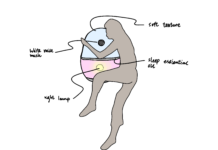Summary: Throughout its history, the design industry has predominantly been concerned with two things; Promoting industry through the design of products and services, and solving problems encountered by people in the consumption of products and services.
There have been two critical contexts in which this has occurred; the age of the Anthropocene (where humans have been the dominant species on earth) and the capitalist economic system.
From design came the concept of human-centredness, where designers placed the desires and needs of the human at the centre of their design project. This creates a nested relationship of human at the centre of a capitalist system (which prioritises private ownership, wealth accumulation, competitive markets and the reduction in the cost of labour) in an epoch of human exceptionalism.
In hindsight, one can see how this could become problematic.
Planet-centric design aims to re-balance this arrangement by placing Mother Earth at the centre of design projects, prioritizing its ecosystem and the creation of positive outcomes for the planet. Here the importance of the human changes, as they become another actor in the system, as opposed to the centre of it.
Personal Reflection:
This panel for Design assembly walks through a definition of earth centric design in an economic context, explaining how the concept unfolds in the industry. It can be useful to help map out design practice in the context of earth-centric perspectives in the business/design market food.
Reference:
Jackson, C. (2023). What is Planet-Centric Design? web: https://www.wecreatefutures.com/blog/what-is-planet-centric-design



